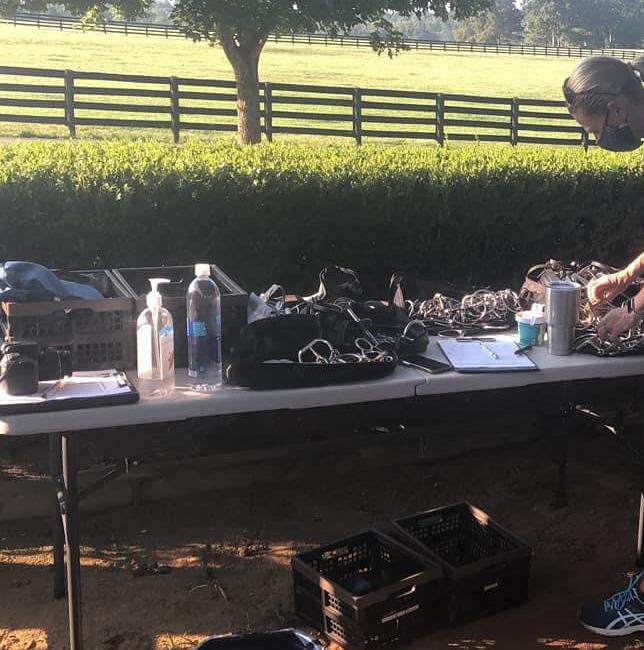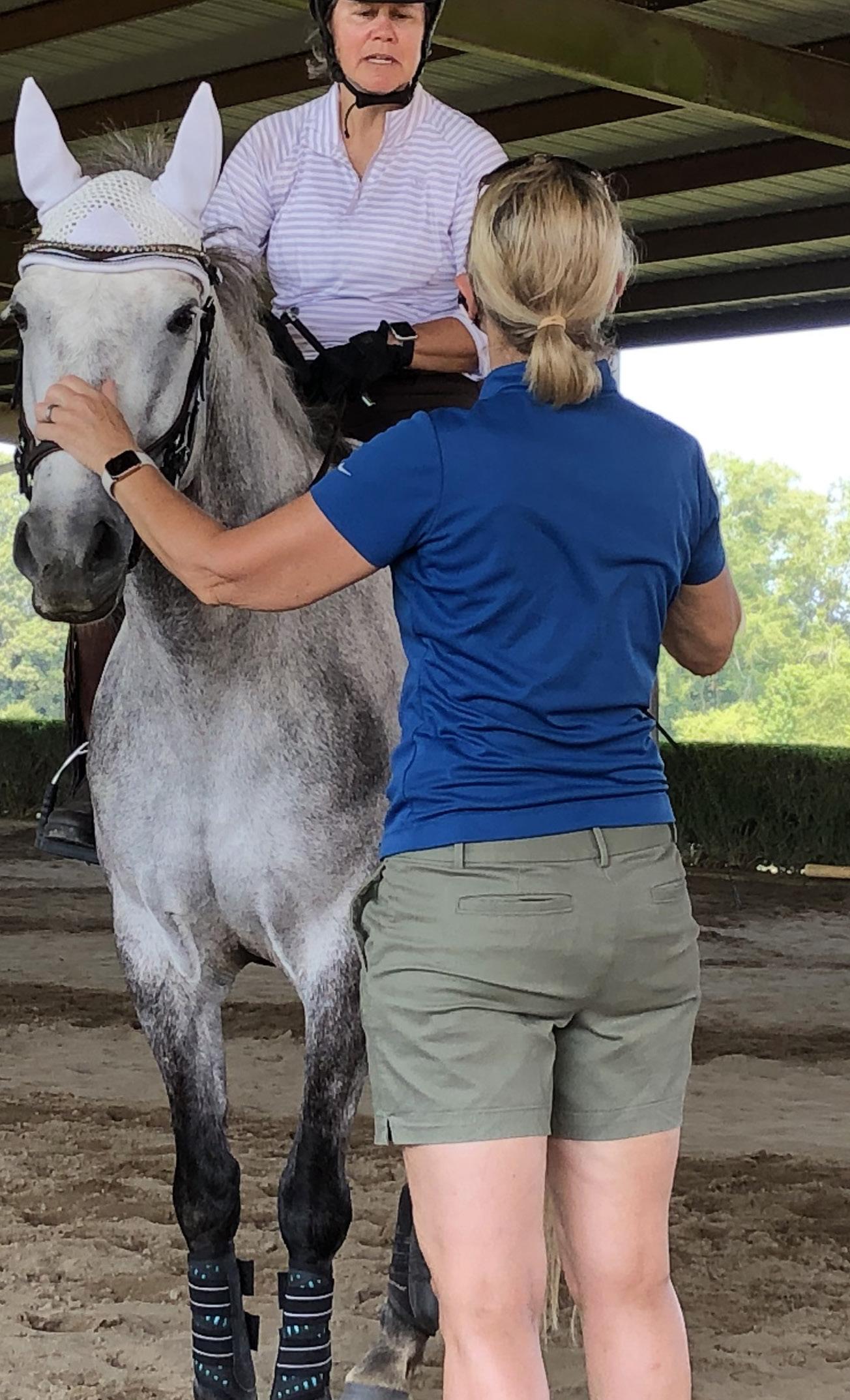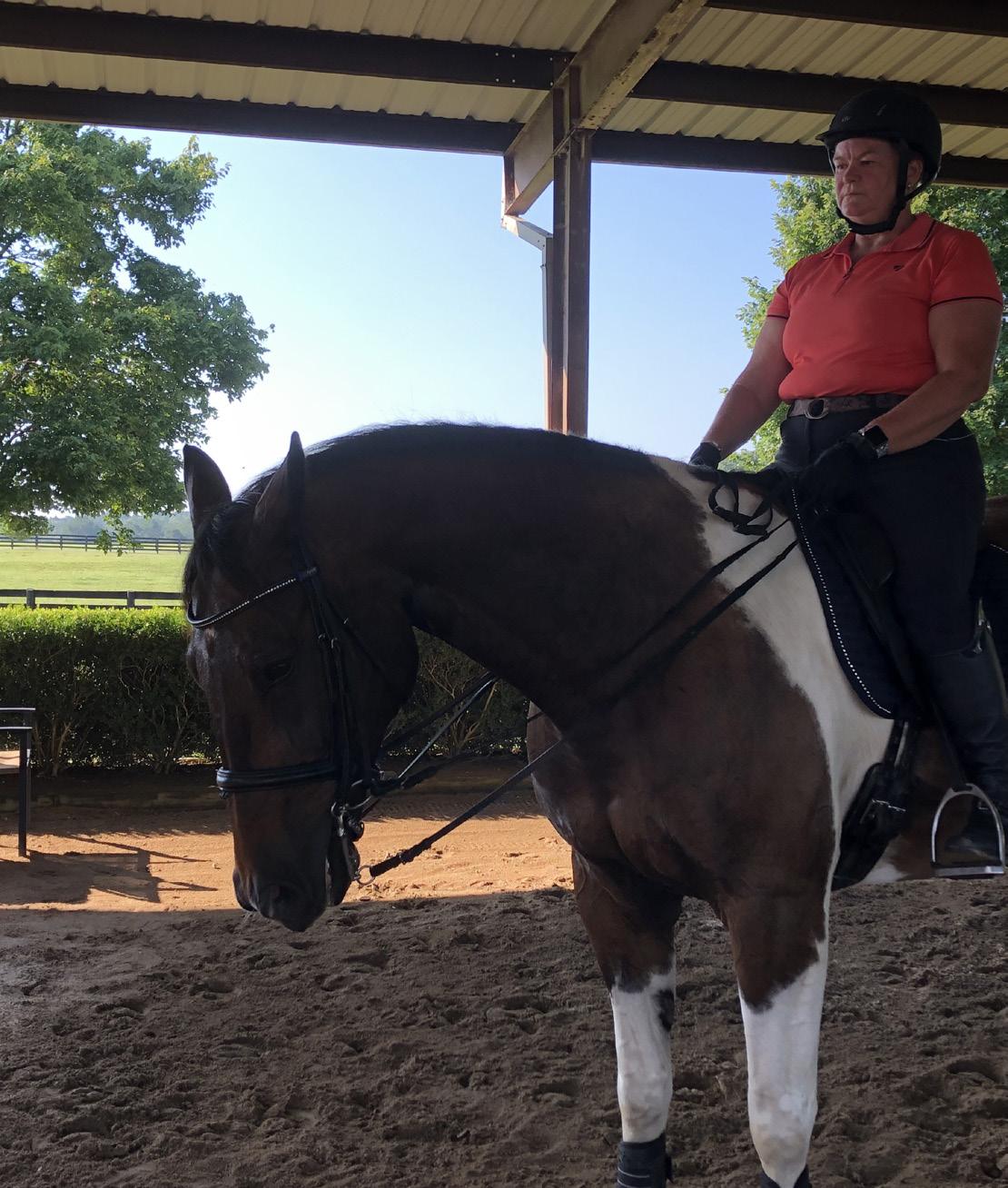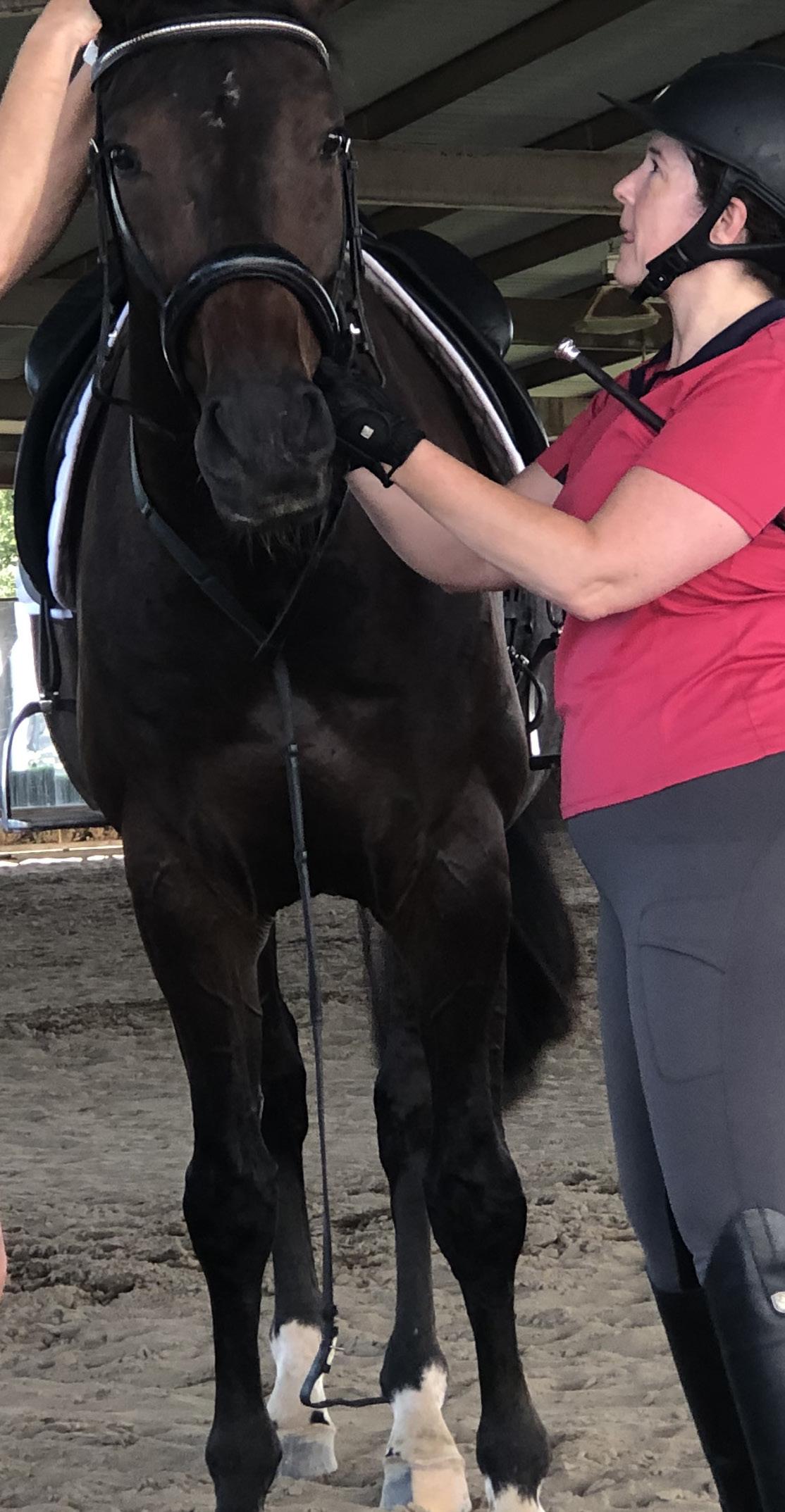
2 minute read
Bit Fitting 101: One Size Does Not Fit All!
from Collected Remarks - July/August
by GDCTA
By Joanne Morse
GDCTA was excited to have Kim Gentry down for one of her bit fitting clinics this past month. The clinic was held at the beautiful Bear Creek Farm in Moreland, Georgia. Bit design has really advanced over the last decade and I was eager to expand my knowledge in that department. We were quite lucky to have a broad variety of horses for Kim to work with over the course of the weekend. There were horses in all disciplines from dressage to eventing to fox hunting to hunters. Regardless of the background of the horse and rider, Kim was able to use her vast knowledge to help each pair find exactly what they needed to be better.
As an auditor it was very educational getting to hear Kim’s remarks on what she saw when she first watched a horse go around. After watching a pair ride around for a few minutes, she would always start with a physical examination. This involved feeling in the horse’s mouth to examine the bars, palette, lips, cheeks, etc. Every horse was different. Some had very elastic lips and others were very shallow. Some horses had remodeling to the bars that required special attention. It was clear that what was going to work for one pair was not going to necessarily work for the next pair.
Another element was to not only look at the horse but to factor in the rider as well when solving the puzzle of which bit would be best. We discussed the different types of snaffles (loose ring, egg butt, D-Ring, etc.) and what the advantage was to each type. A young horse still learning to accept connection would need something different from a horse more secure in the connection. The same concept would be applied to a rider who maybe was not as strong in the position versus and very solid rider.

At the end, it was clear that everyone was able to benefit from a change in bit even if the change was minor. We watched horses go around that we thought looked great and then were blown away when we saw improvement with a bit change because they then looked even better! Bit change did not just affect the frame the horses went in but transformed the entire body. We saw shoulders open up resulting in longer strides. Horses suddenly went more forward without the rider changing their ride. Horses that were maybe reluctant to search for contact suddenly looking for the bit, opening up the door for the next stage of training.
I would absolutely recommend working with Kim if you want to take your training to the next level or are having trouble with your current set up. If you are stuck in a journey of bit trial and error, the fitting will easily pay for itself by helping you avoid buying the wrong bit again and again.


On behalf of GDCTA, I would like to publicly thank the Hal and Linda Barry for sharing their amazing facility with us for the weekend. It is definitely summertime in Georgia and the use of a covered arena to shield us from some of the heat was much appreciated by everyone!




